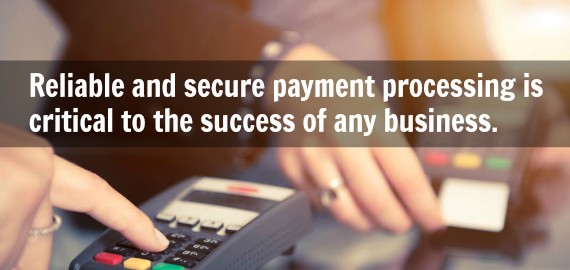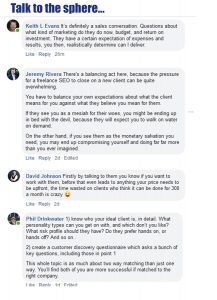One new business is started every minute in the United States. Some economists predict that more than 40% of Americans will be self-employed by 2020.
Eighty-eight percent of the Fortune 500 companies that existed in 1955 no longer exist today. Fifty percent of new businesses close within 4 years. Only a third of those new businesses survive 10 years or more. Forbes contributor Eric Wagner says 8 out of 10 new businesses fail within the first 18 months of initiation.
A recent Entrepeneur.com article lists decision-making as one of the 8 biggest challenges for new entrepreneurs, stating “new entrepreneurs are forced to make hundreds of decisions a day, from big, company-impacting decisions, to tiny, hour-affecting ones.”
This list of 41 resources is designed to make some of the decision-making a little less stressful. Used as a starting point, this list might inform new entrepreneurs of a few resources they never even knew they needed.
Business Planning
A business plan is necessary if an entrepreneur plans to borrow money from a financial institution. Funders want to know you have a solid business strategy that includes an exit plan. But, business planning is important for other reasons as well.
Business plans also help entrepreneurs decide if and when they will need funding. The plan will help establish key objectives, set priorities, and plan future expansions.

#1. Entrepreneur.com: This business plan template gallery is powered by SeamlessDocs. It includes an executive summary, a non-disclosure agreement, a marketing plan, and a business plan overview.
#2. Score: The Score business plan walks entrepreneurs through writing their plan with a series of 150 questions, all divided into sections. Entrepreneurs can work through sections in any order and skip sections that do not apply to them.
#3. SBA: This business planning tool provides a step-by-step guide to creating a business plan. Business plans are saved in PDF format and can be accessed and updated at any time.
#4. Bplans SWOT Analysis: A SWOT analysis helps an entrepreneur analyze her business’s strengths and weaknesses, as well as the business’s potential opportunities and threats.
#5. Harvard SWOT Analysis: This is a one-page SWOT analysis sheet that asks simple questions that guides users through the analysis process. This one-page sheet simplifies the process and makes it less daunting.
#6. MPlans Competitive Analysis: This article is a great resource for entrepreneurs who need to perform a competitive analysis. Author Tim Berry, of Palo Alto Software, provides simple digestible tips to help maneuver entrepreneurs through the process.
Financing
The SBA states it costs an average of $ 30,000 to start a new business. Because no two businesses are alike, many micro-businesses can start with as little as $ 3000 funding.
When estimating the cost of running a business, entrepreneurs should consider their expenses, capital expenditures, and current assets.
Before applying for a business loan, it’s important for entrepreneurs to decide if they can afford to borrow the money. Elizabeth Palermo, contributor at Business News Daily, offers tips to help figure that out.

#7. SBA Loans and Grants: Small businesses have access to a wide range of financing options through federal, state and local governments. These programs include low-interest loans, venture capital, and scientific and economic development grants.
#8. US Treasure Small Business Lending Fund: The US Treasury gives funds to qualified community banks and community development loan funds (CDLFs) in order to encourage small business lending. The purpose of this program is to encourage Main Street banks and small businesses to work together to create jobs and promote economic growth.
#9. USA Access Financing Wizard: Entrepreneurs can use this questionnaire to help them find government resources to access financing for their business.
#10. Angel investors: An angel investor is typically an affluent individual who provides capital for a business start-up, usually in exchange for convertible debt – debt that’s converted to equity at some later date – or ownership equity.
Short-term loans:
#12. PayPal Working Capital: PayPal Working Capital allows business owners to borrow up to 15% of their last 12 months of sales. Businesses can borrow up to $ 85000 and pay zero interest. This loan is useful for entrepreneurs who have been in business at least a year and need short-term financing for an emergency situation.
#13. Kabbage: Businesses that have been in business for at least 1 year and have at least $ 50,000 per year in revenue might qualify for a credit line with Kabbage. Payment terms are for a term of 6 months or less. Businesses can receive a credit line between $ 2,000 and $ 100,000.
#14. OnDeck Capital: Businesses that have been in business for at least 1 year and have over $ 100,000 in revenue might qualify for a loan from OnDeck. One of the owners must have a credit score of at least 500. Short term and long term financing is available and Ondeck even offers a line of credit.
Marketing
Unfortunately, building it does not mean they will come.
Twenty-eight percent of venture capitalists said the most frequent mistake they saw in business plans was a lack of a marketing strategy. Many entrepreneurs fail to clearly specify who their customers will be and how they will reach them.
Poor marketing, or lack of marketing, is listed as one of the top 6 reasons businesses fail.

#15. BizStats: Use this marketing research tool to gain valuable insights about customers, competitors and market trends. BizStats can help determine the revenue potential for startups. It can also help entrepreneurs determine their advertising budget.
#16. Free Lunch: This handy research tool provides entrepreneurs with economic, demographic and financial data. Entrepreneurs gain valuable insight into economic and population trends from the consumer and labor marker data collected, in addition to the gross domestic product and inventory ratios data available.
#17. MadMimi: Mad Mimi is a simple email marketing service that enables users to create, send and track email campaigns without using templates. Customization options are available and tips for template design are available, if users choose to design them.
#18. AWeber: This email marketing program includes broadcast messages, reporting, and subscriber management. Over 700 templates are available and users can easily customize those templates to fit their needs.
#19. Open Site Explorer: Entrepreneurs use Open Site Explorer the same way they would use Google or Bing. Use it to explore a website to collect a vast amount of competitor information. This tool can be used to analyze your own website as well.
#20. WordPress Landing Pages: Landing pages are a critical component of a company’s lead generation strategy. This WordPress plugin helps entrepreneurs create landing pages quickly and easily. Users can also monitor and improve conversion rates, run A/B split tests, and customize templates.
Sales
Sales planning is crucial for the success of any business. Entrepreneurs should clearly identify their ideal customer profile and a list of prospects. In addition, before launching a business, it’s important to do some research to identify your company’s forecasted sales cycle. Be sure to set clear financial goals and share those goals with every member of your leadership team.
#21. OnePageCRM: This online CRM software is designed exclusively for small businesses. It keeps core CRM functions on one page. OnePage CRM is focused on sales activity. This tool helps users move prospects and customers through the sales funnel.
#22. SalesExec: This CRM tool helps users capture leads, route leads and reduce the time it takes to close more deals. SalesExec can be deployed in a much shorter timeframe than other CRM solutions.
#23. You Don’t Need a CRM: This lead management tool is designed with one goal in mind: turning prospects into paying customers. The tool is simple web-based software built to help sales teams close sales without dealing with a lot of paperwork.
#24. Unbxd: This tool is a website search and personalization platform which helps ecommerce companies engage customers on their websites. Unbxd helps customers find what they’re looking for while they shop.
#25: SellerRepublic: Entrepreneurs who use Amazon as part of their sales strategy will find SellerRepublic’s repricing software very useful. The tool is fast and easy to use and it gives sellers maximum competitive advantage. The various features are designed to help increase sales and profits.
Payment Processing
Reliable and secure payment processing is critical to the success of any business. There are differences between merchant accounts and internet merchants who accept payments on your behalf without the need for you to open a merchant account.
Before choosing a merchant account or an internet merchant, learn more about keeping your credit card fees low.

#26. Basecommerce: This is an API driven payment platform that can be used to accept payments on websites, mobile websites, and apps. The platform can be used by businesses of all sizes to accept a one-time payment – or recurring payments – on physical or digital goods and services.
#27. WorldPay: This merchant service provides secure payment services for small and large businesses, including payments online, card machines and telephone payments.
#28. Authorize.Net: This is a payment gateway service provider that allows merchants to accept credit card and electronic check payments through their website and over an IP connection.
#29. Square: This mobile payment processor is one payment solution that meets the needs of the entire business. Square offers secure credit card processing – including Apple Pay & EMV – to point of sale solutions.
Employees
Productivity, time management, scheduling and team building are just a few of the many employee-related issues new entrepreneurs will address. Here are a few resources to get started.
#30. Dropbox for Business: This file-sharing desktop and mobile app is a useful tool for startups. With so many new businesses starting out with virtual teams working in remote locations, Dropbox makes it easy for teams to sync important documents across multiple platforms. Team members can find what they’re looking for quickly and easily. collaboration tool.
#31. Producteev: This task management app is designed for teams. Invite and collaborate with an unlimited amount of people. Set up unlimited projects and tasks and add due dates and times to those tasks. Tag other team members in conversations and assign tasks to team members as needed.
#32. MyMail: This free email app manages all your email accounts in one place. MyMail supports all major mail providers and any other IMAP or POP3-enabled mailbox.
#33. Hive Desk: This software is designed to manage virtual teams or remote workforces. The software’s features include time tracking, screenshots, activity levels and productivity reports.
#34. MicroMain: Any company or organization that has a lot of routine maintenance tasks can use the MicroMain software to streamline their maintenance operations. Some of the software’s features include: work order scheduling, labor tracking, work order tracking, preventive maintenance, asset management and asset tracking.
#35. HipChat: This useful tool is team chat built for business. HipChat includes group and private chat, file sharing, video calling and screen sharing. The content is searchable and the software runs on Mac, Windows, iOS, Android, and Linux. The mobile app is available for Android and iPhone users.
#36. When I Work: This employee scheduling software is ideal for small businesses. The software allows you to make shift changes and fill shifts in seconds. The app lets employees conveniently request shift trades and time off.
Insurance
#37: eHealth: This is a web-based private health insurance exchange. Entrepreneurs can find health, dental and vision insurance for their employees. eHealth also provides individual and family health coverage.
#38: HealthCare.gov: This is the health insurance exchange website operated under the United States federal government. Through HealthCare.gov, businesses with 50 employees or fewer can offer the Small Business Health Options Program (SHOP) plans to their employees, starting any month of the year.
#39: Net Quote: Get insurance coverage for your business through Net Quote. Entrepreneurs can secure property, liability, commercial, business interruption, disability, health, life, and worker’s compensation insurance through this website.
#40: Gadget Cover: Cover all your company’s mobile devices and gadgets with Gadget Cover. This mobile device and gadget insurance covers theft, accidental damage, liquid damage, worldwide cover, unauthorized usage, loss and breakdown.
#41. Esurance Cell Phone Insurance: This insurance coverage is available for most phones, regardless of when the phone was purchased. The policy also provides coverage for lost, stolen, or damaged phones. In addition, the policy provides coverage for mechanical and electrical failure after the manufacturer’s warranty has expired.
There are hundreds of additional resources that can help make life a little less stressful for new entrepreneurs. If you know of any resources that should be on this list, please share your suggestions in the comments.
This article first appeared on Huffington Post.
Business & Finance Articles on Business 2 Community(104)







